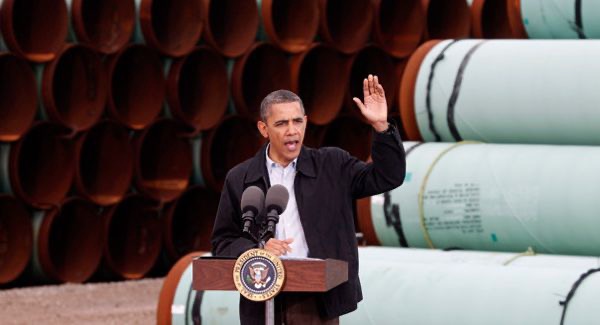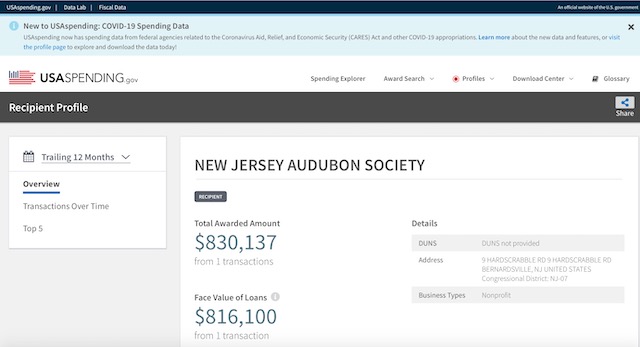Biden PennEast Pipeline Betrayal Tests NJ Gov. Murphy’s Climate Commitments
Will Murphy’s DEP Kill Pipeline By Denying Water Quality Certificate?
Will NJ’s Green Mafia and Media Call Out the Biden Betrayal?
Biden’s Lawyers Actually Tout US History of Plantations and Indian Reservations
Last week, the Biden Administration’s Acting Solicitor General filed a brief to the US Supreme Court in support of the PennEast pipeline and against the State of New Jersey.
The Biden brief argues that the Federal Energy Regulatory Commission (FERC) may delegate power to a private corporation to condemn and take State owned preserved public land by eminent domain to build a fossil pipeline.
This amounts to the radical right wing corporatism FDR warned about:
“The liberty of a democracy is not safe if the people tolerated the growth of private power to a point where it becomes stronger than the democratic state itself. That in its essence is fascism: ownership of government by an individual, by a group, or any controlling private power.”
(NJ folks should know that the NJ Business and Industry Association (NJBIA) also filed a brief in support of PennEast.)
Here’s the national story (it’s tough to keep abreast of the news while on the road):
In the likely event that the 6-3 right wing Supreme Court agrees, the implications are nation-wide and a disaster for climate and anti-pipeline activists. The NJ BIA brief makes those implications very clear (if PennEast loses):
First, it will severely impede the continued orderly development of critically needed natural gas infrastructure. Second, it will render large reserves of natural gas in states like Pennsylvania unavailable to meet the growing energy needs of states like New Jersey. Third, by slowing or potentially halting interstate pipeline development, it will deprive the nation of the substantial economic activity associated with both the construction of the pipelines themselves, and the upstream and downstream users of the natural gas they transport. Finally, by introducing delay and uncertainty into the approval process, and casting into doubt the utility of a FERC-issued certificate of public convenience, it will make pipelines more difficult to finance and more expensive to build.
The implications are made even worse given the Biden Administration’s upcoming “infrastructure plan”, which certainly will include corporate subsidies, privatization, and deregulation – under the guise of “public private partnerships” – for fossil pipelines (remember, it was Obama who bragged about overseeing record US oil and gas production as well as miles of pipelines installed. Surely Joe Biden remembers that. Take a look!)
Under my administration, America is producing more oil than at any time in the last eight years. We’ve opened up new areas for exploration. We’ve quadrupled the number of operating rigs to a record high. We’ve added enough new oil and gas pipeline to circle the Earth and then some,” Obama said (source)
The Biden brief contradicts Biden’s climate commitments and can only accelerate and expand construction of fossil pipelines and fossil infrastructure (amidst all the climate talk, see huge growth of US oil production, and US gas production, and US coal production).
The Biden brief completely destroys the legal strategy of Gov. Murphy and NJ Attorney General Grewal.
The Biden brief tramples on NJ’s legal, political, and environmental interests, as well as Gov. Murphy’s Energy Master Plan and DEP’s upcoming Climate PACT regulatory initiative.
The Biden brief exposes the misguided strategy of NJ’s “Green Mafia”, who have relied on private property protections and virtually ignored State Police powers and DEP’s regulatory powers under Section 401 of the Clean Water Act to kill the PennEast and other pipelines.
We’ve been writing about that and NY State and Connecticut’s 401 WQC denials, and criticizing NJ fools like Tom Gilbert for their failure to focus on it for over 4 years, see:
Media should ask AG Grewal if NJ DEP is willing to pull that legal trigger.
We specifically warned – many times, for several years – about the misguided, dishonest, cowardly, and failed strategy of cheerleaders like Rethink Energy NJ.
NJ Attorney General Grewal and opponents of the PennEast pipeline are calling the US 3rd Circuit Court of Appeals decision a “major victory” and a “groundbreaking ruling” and that the decision “stops PennEast in their tracks”.
They are exaggerating, misleading the public, making factually false statements, and simply not telling the full story. The decision is not a “groundbreaking ruling”, not a “major victory”, and will not “stop the project in its tracks”.
By making these exaggerated and false claims, they are undermining activist efforts to block all proposed pipelines and all fossil infrastructure, to inject climate change in regulatory decisions, and to enforce the Clean Water Act.
We exposed the failed focus on open space, see:
And we exposed the failed neglect and outright lies about DEP’s regulatory power, most recently last January, see:
But you wouldn’t know any of that by reading NJ Spotlight – a media outlet who has long spun the PennEast pipeline story and provided a platform for cheerleaders like Tom Gilbert of Rethink Energy NJ – or by following Green Mafia websites and press releases.
Just the opposite: NJ Spotlight’s cheerleading for gas even got quoted in the NJ BIA brief:
“Inexpensive natural gas from Pennsylvania has been a boon to both customers who heat their homes with the fuel and to businesses that rely on it as a basic building block of their manufacturing processes.” Tom Johnson, [cite omitted]
It’s radio silence over there and in many other high places that are adversely impacted by the Biden betrayal. Biden’s betrayals are being given a pass – just like Obama’s were.
Paging Tom Gilbert – where are you?
Paging Attorney General Grewal – where are you?
Paging Acting DEP Commissioner LaTourette – where are you?
Paging NJ BPU Commissioners – where are you?
Paging Gov. Murphy – where are you?
Paging Senate Environment Committee Chairman Smith – where are you?
NJ lawyers and Rutgers Law School- where are you?
Paging NJ press corps – where are you?
[End Note: The case will not be limited to the Natural Gas Act or pipelines.
It will vastly expand corporate power in many ways, and not just for infrastructure.
And it will also effect related issues, including federalism, interstate commerce, and the powers of State’s under the Clean Water Act.
Biden’s brief represents a radical and fundamental view: (@page 10)
In light of the long unbroken history of colonial, state, and federal delegations of such authority, there is no basis to conclude that, when the States granted the federal government the eminent-domain power in the plan of the Convention, they silently retained the right to veto delegations of its exercise, as long as they could first obtain any property interest in the land at issue.
And this argument has broad and damaging implications:
The interests States own today, moreover, are just the beginning. Most States utilize State-owned conservation easements like the ones that respondents rely on here. …. The federal government generally supports States’ efforts to use such easements to protect valuable farmland and open space. See 7 C.F.R. Pt. 1468 (grant programs). But the decision below converts those programs into a sword against federally approved projects.
The Biden brief explicitly attacks the private property strategy Rethink Energy NJ relied on:
For example, in New Jersey, the State can acquire new conservation easements by purchase or condemna- tion. See N.J. Stat. Ann. §§ 13:8A-37(d), 13:8A-40(a) (West 2003). Under the court of appeals’ decision, all the State needs to preclude any FERC-approved project it opposes is a willing landowner along the route. Indeed, even if the landowner were unwilling, the State could invoke its own eminent-domain power. Id. § 13:8A- 40. While a landowner could fight those efforts, New Jersey is a quick-take State that can acquire immediate title upon filing a declaration of taking and depositing estimated compensation. Id. § 20:3-19 (West 1997).
Ans here’s where privatization and corporate power are magnified and extended beyond any effective limits:
The only question, then, is whether the federal eminent- domain power inherent in the plan of the Convention includes the ability to authorize private entities to exercise it. History answers that question with a yes.
b. The power of eminent domain has been under- stood since before the Founding as a sovereign power that private entities may exercise for projects that the sovereign deems in the public interest.
And in a grab your hat “holy shit!” moment, Biden’s brief actually celebrates the power of PLANTATION OWNERS!
In Pennsylvania, for example, any person could apply to a justice of the peace for a “road to be laid out from or to the plantation or dwelling-place of any person or persons to or from the highway.” 1735 Pa. Highway Act
And establishment of INDIAN RESERVATIONS:
For the nearly 150 years since Kohl, no one ap- pears to have seriously questioned that the federal government’s eminent-domain authority includes the authority to condemn property owned by a State. .[…] see Act of July 24, 1935, ch. 414, § 2, 49 Stat. 496-467 (authorizing Secretary of the Interior to “acquire by condemnation” certain lands “held in public, private, State, or Indian ownership” for purposes of establishing an Indian reservation);
How could conservatives support that expansion in scope of power, particularly to “take” property?
How could conservatives support trampling of State’s rights?
How could conservatives support such a vast expansion of federal government power?
I’m going to predict that the Supreme Court will narrowly decide the case based on jurisdiction.

